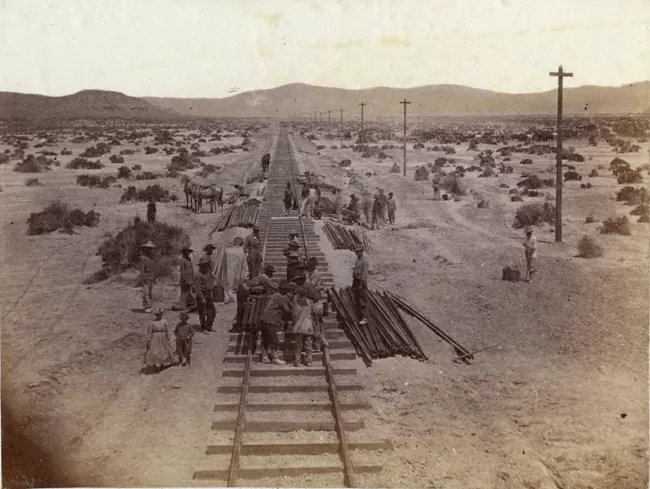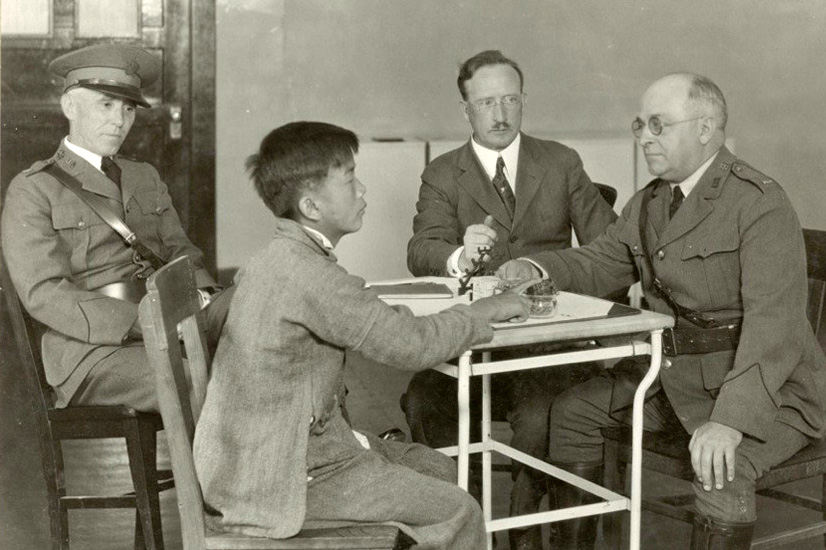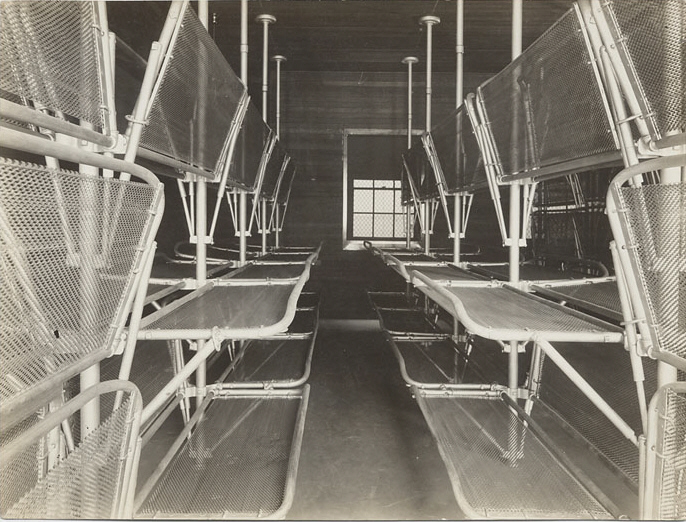
Chinese workers building the Central Pacific Railroad, California, Photo by Alfred A. Hart, 1867
The Chinese Exclusion Act was one of the first in a series of laws in the late nineteenth and early twentieth centuries that made an effort to stop or slow down immigration of groups who were seen as ethnically or racially inferior.
But the United States is a nation of immigrants from across the globe. While many people immigrated through the better-known Ellis Island in New York, there was not a similar immigration processing station to manage immigrants coming from Asian countries via the West Coast. Angel Island off the coast of San Francisco, California opened as an immigrant detention center in 1910. It processed hundreds of thousands of immigrants mostly from China, Japan, Russia, and South Asia for over three decades until its closure in 1940. Angel Island, which was originally home to the Huimen tribe of the Coast Miwok, was chosen for its isolation, making it easier to control potential outbreaks of disease.

Immigration interview on Angel Island, 1923. Photo courtesy of Records of the Public Health Service (Group 90), National Archives.

Poem 135 from Island carved on the walls of a lavatory room on the first floor of the detention barracks at the Angel Island Immigration Station, author unknown. Photo by Ying Diao
During these long periods of detention, some immigrants took to writing on the walls of their cells or barracks. Many of these poems have been preserved and documented and express themes of hope, anger, and despair. Poem 61 was carved by an anonymous detainee into the walls of the Detention Barracks at Angel Island and reads:
Bored and filled with a hundred feelings, I am imprisoned in the building.
Seeing the surroundings stirs one who is sad. How can one stop the tears?
I recall the ship starting off for the land of America.
Looking back, the moon has repeated a cycle.
Looking for picture books featuring Chinese Americans during this time?
I am an American : the Wong Kim Ark story by Martha Brockenbrough with Grace Lin ; illustrated by Julia Kuo, nonfiction
Paper son : the inspiring story of Tyrus Wong, immigrant and artist by Julie Leung ; illustrated by Chris Sasaki, nonfiction
Landed by Milly Lee; illustrated by Yangsook Choi, fiction
Li on Angel Island (Smithsonian Historical Fiction) by Veeda Bybee, fiction
Mountain chef : how one man lost his groceries, changed his plans, and helped cook up the National Park Service by Annette Bay Pimentel ; illustrated by Rich Lo, nonfiction

